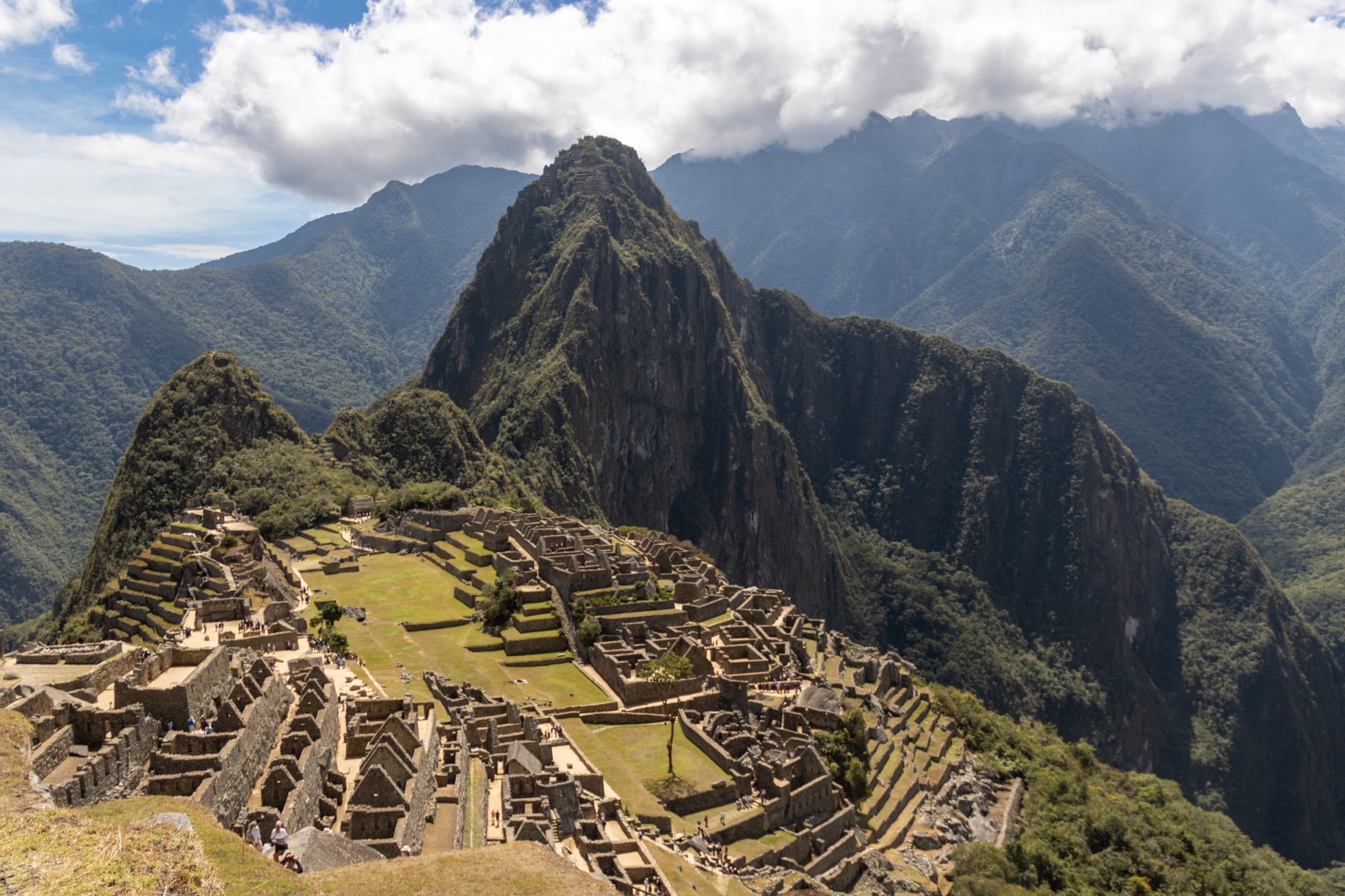Written and photographed by Samantha Demangate
Regarded as one of the most iconic ancient archaeological sites, Machu Picchu continues to be a magnetic destination for travelers and historians across the world. Tucked within the Peruvian Andes, this time-honored city boasts mysticism and beauty, spawning numerous myths and misconceptions over the years. Let’s debunk the myths and explore the truths behind the ever famous Inca city.
Myth 1: Machu Picchu was the Inca Capital
Our first and most common misconception is that Machu Picchu acted as the Inca Empire’s capital. Despite popular belief, the site was never the capital of the Inca Empire. It would be far too small to handle that kind of urban activity. The actual capital was the city of Cusco, located approximately 65 kilometers (41 miles) from Machu Picchu.
Machu Picchu is believed to have been used as a royal estate and religious retreat for Inca emperor Pachacuti. Its thoughtful location overlooking the Urubamba Valley and its architectural features hint at its importance regarding religious and ceremonial purposes. While Machu Picchu was undeniably significant, it did not function anywhere near to the same degree as the actual capital. The historical importance of the city of Cusco cannot be emphasized enough.



Myth 2: It was Found by the Spanish
The idea that Spanish conquistadors were responsible for discovering Machu Picchu is a fictional one. The site was far tucked away and remained unknown to the Spanish during their conquest of the Inca Empire. Machu Picchu was not on record in the Spanish colonial period, and remained hidden from their conquest due to its remote location. Instead, areas like Cusco or Ollantaytambo gained the interest of the Spanish, as they were bustling urban centers.
Myth 3: Machu Picchu is a Lost or Forgotten City
A common misunderstanding about Machu Picchu is that it is a “lost city”. While American historian and explorer Hiram Bingam located Machu Picchu in 1911, he didn’t exactly rediscover it. While it’s true that the site had been essentially unknown to most of the world, it was never fully lost to the local population. On the contrary, indigenous locals actually lived in the area and were well aware of its existence.



Myth 4: Machu Picchu is the Highest Inca Landmark
It may be shocking, but Machu Picchu is actually significantly lower in elevation than Cusco and several other ruin sites. Pisac, Moray, Sacsayhuaman and Chinchero are all significantly higher than Machu Picchu.
The city of Cusco, rests at an elevation of roughly 3,400 meters (11,150 feet) above sea level, whereas Machu Picchu is only at an elevation of about 2,430 meters (7,970 feet). But Cusco’s elevation isn’t as famously noted. This may be because Cusco is a significantly bigger area and is surrounded by a more level environment, making the city’s elevation less obvious. In contrast, Machu Picchu, an extremely small area in comparison, sits between jagged mountains of differing heights, highlighting the site’s grandness.


Myth 5: All the Structures are Original
For many, it’s assumed that all of the structures of Machu Picchu are original, but that’s not so! A small portion of the buildings have been restored or even reconstructed. This is due to wear over time, natural erosion and of course, the impacts of tourism. The restoration is in effort to maintain the original overall area, as to not let it go to complete ruin.


Myth 6: The Inca Trail is the Only Way to Reach Machu Picchu
The Inca Trail is a widely well known hiking route that reaches Machu Picchu, but it isn’t the only way to reach the landmark. While it is an excellent option, visitors need to prepare for a difficult trek that will take a number of days. In addition, it can be pricey, and visitors must have a guide accompanying them on the Inca Trail. This is all due to it’s popularly of course.
There are lesser known hiking routes, such as the Salkantay Trek, Lares Trek, Ancascocha Trek and more, providing alternative experiences.
If visitors have less time, or simply do not want to hike, they can opt for a more relaxing journey by train. Trains are offered in Cusco, Ollantaytambo and Urubamba.
All trains arrive in Aguas Calientes, where visitors can then take a bus to Machu Picchu itself. But if you are planning to visit Machu Picchu in one day, prepare for an early morning. It’s a long way from Cusco!

Myth 7: Machu Picchu was Built by Aliens
A popular one, definitely, some visitors, and locals for that matter, do still insist that Machu Picchu was built with the assistance of aliens. While it is a fantastical notion, the theory is totally baseless. Historical and archaeological evidence thoroughly indicates the ingenuity of the Inca civilization. Their stonework, intricate and gorgeous, should receive the credit that it deserves.
These seven misconceptions are certainly not all. The history of Machu Picchu holds several other curiosities. Learning about and accepting the truths of this significant site will only allow us to appreciate it more. Machu Picchu will continue to captivate visitors, leaving us awe of the capabilities of the once Inca Empire.
Did you enjoy this article? Check out another: Getting Caffeinated in Buenos Aires, Argentina

